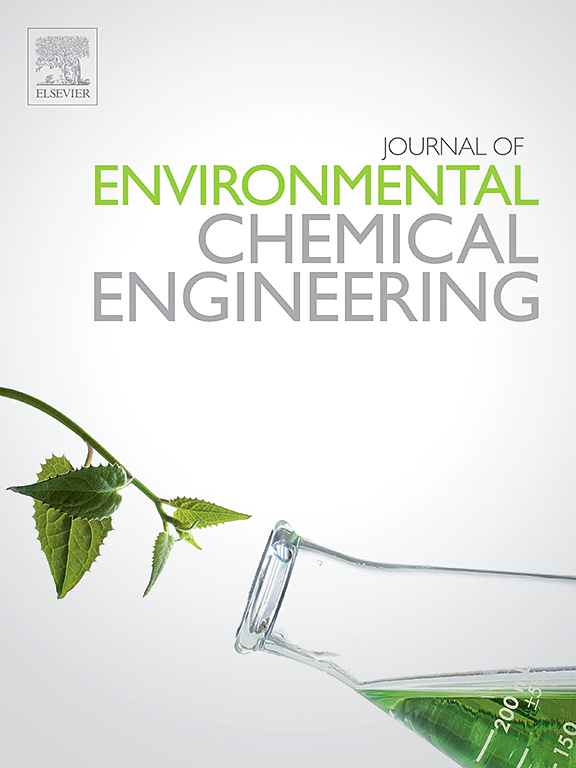Amorphous metal-organic frameworks: From synthesis strategies to emerging applications
IF 7.4
2区 工程技术
Q1 ENGINEERING, CHEMICAL
引用次数: 0
Abstract
Amorphous metal-organic frameworks (AmMOFs) have emerged as alternatives to their crystalline counterparts due to their unique structures, diverse properties, and wide applications. AmMOFs usually combine the advantages of crystalline MOFs (CrMOFs) including high surface area, exceptional chemical and thermal stabilities, chemical functionalities, and tunable pore sizes/shapes, with the emerging properties of amorphous counterparts including the absence of grain boundaries, abundant defects and active sites, isotropy, high flexibility, and enhanced mechanical robustness. Although the number of reports on AmMOFs is much lower than those on CrMOFs, in some examples they exhibit improved properties and have also attracted increasing attention in the recent years, thereby they will possess great potential in the future technologies. This review aims to highlight the recent progress of AmMOFs in synthesis methods, structure-property relationships, and emerging applications. In this regard, we highlight the superiority of AmMFs compared to their crystalline counterparts, then describe two primary approaches for preparing AmMOFs including: 1) top-down: amorphization of pre-synthesized CrMOFs via different treatment methods, and 2) bottom-up: direct synthesis of AmMOFs. Additionally, we highlight the recent progress of AmMOFs in different fields including biomedical, catalysis/photocatalysis, energy storage and conversion, chemical sensing, gas adsorption and separation, and water/wastewater treatment applications.
非晶金属有机框架:从合成策略到新兴应用
非晶态金属有机骨架(AmMOFs)由于其独特的结构、多样的性能和广泛的应用而成为晶体结构的替代品。ammof通常结合了晶体mof (crmof)的优点,包括高表面积、优异的化学和热稳定性、化学功能和可调节的孔径/形状,以及非晶mof的新特性,包括没有晶界、丰富的缺陷和活性位点、各向同性、高柔韧性和增强的机械稳健性。虽然AmMOFs的报道数量远低于CrMOFs,但在一些例子中,AmMOFs的性能得到了改善,近年来也受到越来越多的关注,因此在未来的技术中具有很大的潜力。本文综述了近年来AmMOFs在合成方法、结构性质关系和新兴应用等方面的研究进展。在这方面,我们强调了AmMOFs与晶体材料相比的优势,然后描述了制备AmMOFs的两种主要方法:1)自上而下:通过不同的处理方法将预合成的CrMOFs非晶化,2)自下而上:直接合成AmMOFs。此外,我们还重点介绍了AmMOFs在生物医学、催化/光催化、能量存储和转化、化学传感、气体吸附和分离以及水/废水处理等不同领域的最新进展。
本文章由计算机程序翻译,如有差异,请以英文原文为准。
求助全文
约1分钟内获得全文
求助全文
来源期刊

Journal of Environmental Chemical Engineering
Environmental Science-Pollution
CiteScore
11.40
自引率
6.50%
发文量
2017
审稿时长
27 days
期刊介绍:
The Journal of Environmental Chemical Engineering (JECE) serves as a platform for the dissemination of original and innovative research focusing on the advancement of environmentally-friendly, sustainable technologies. JECE emphasizes the transition towards a carbon-neutral circular economy and a self-sufficient bio-based economy. Topics covered include soil, water, wastewater, and air decontamination; pollution monitoring, prevention, and control; advanced analytics, sensors, impact and risk assessment methodologies in environmental chemical engineering; resource recovery (water, nutrients, materials, energy); industrial ecology; valorization of waste streams; waste management (including e-waste); climate-water-energy-food nexus; novel materials for environmental, chemical, and energy applications; sustainability and environmental safety; water digitalization, water data science, and machine learning; process integration and intensification; recent developments in green chemistry for synthesis, catalysis, and energy; and original research on contaminants of emerging concern, persistent chemicals, and priority substances, including microplastics, nanoplastics, nanomaterials, micropollutants, antimicrobial resistance genes, and emerging pathogens (viruses, bacteria, parasites) of environmental significance.
 求助内容:
求助内容: 应助结果提醒方式:
应助结果提醒方式:


